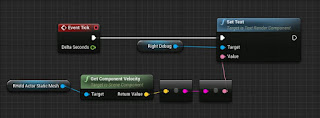If you recently got a HTC Vive, or you are familiar with software such as Virtual Desktop, then there's a chance you've viewed tons of cubemaps within VR. And if you haven't had the chance to try VR yet (you're missing out :/) you've most definitely played a 3d game where the sky consists of 6 textures, that together forms a cubemap. We place the cubemap on a sphere with inverted normals and we have atmosphere! Or no atmosphere, and you're dead. Is this real life? It's usually called a skysphere, and if you're using Unreal (which you should) you've seen it in the default level. If you don't know how to make a sphere with inverted normals, you can just check the "two sided material" checkbox in the material editor, and the textures will be displayed on both sides of your mesh. Creating cubemaps can be a little bit tricky, especially to get the textures to align properly for unreals cubemap coordinates. This workflow does not replac



